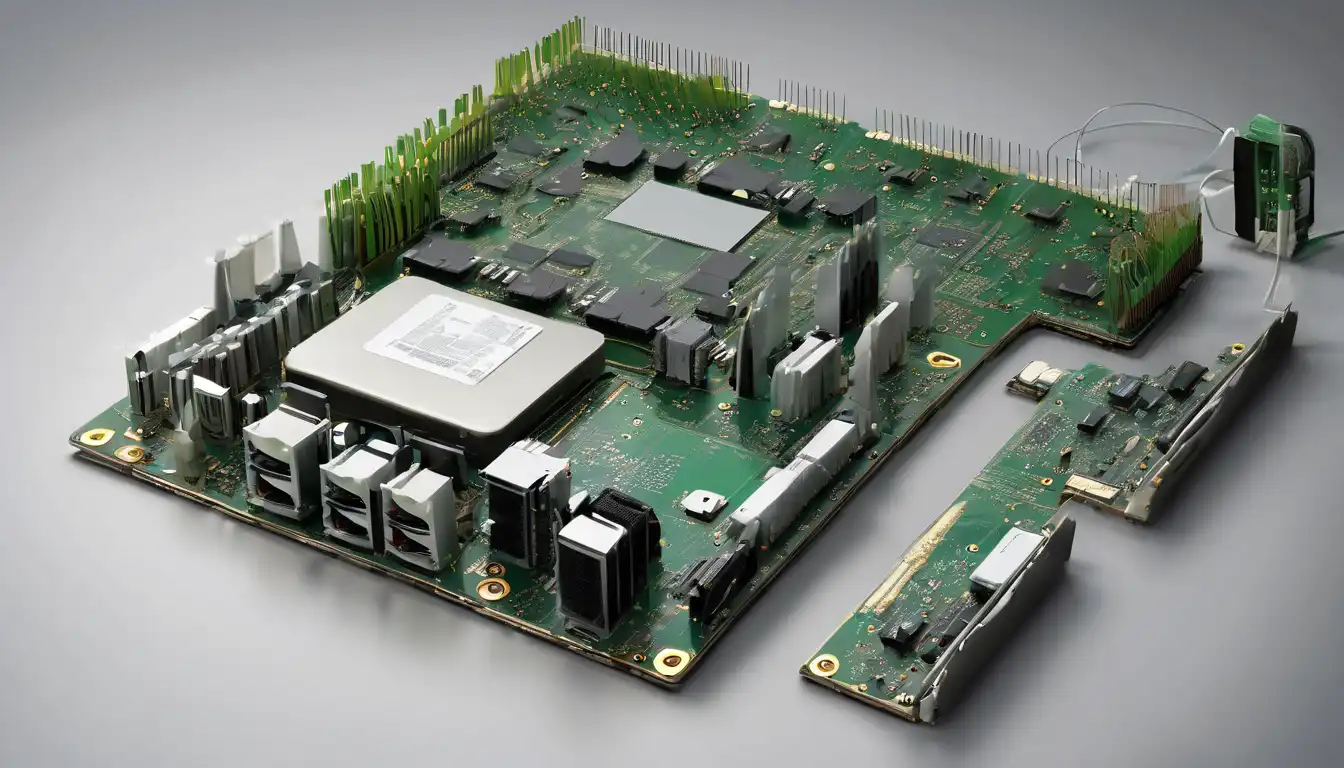Introduction to Sustainable Computing
As environmental concerns continue to grow, the technology industry is undergoing a significant transformation toward more sustainable practices. Sustainable computing represents a crucial shift in how we design, manufacture, and utilize hardware solutions to minimize environmental impact while maintaining performance standards. This comprehensive guide explores the innovative eco-friendly hardware solutions that are revolutionizing the computing landscape.
The concept of sustainable computing extends beyond simple energy efficiency to encompass the entire lifecycle of hardware components. From responsible material sourcing and manufacturing processes to end-of-life recycling and disposal, every aspect of hardware development now considers environmental sustainability as a core principle. As consumers become more environmentally conscious, the demand for green technology continues to accelerate.
Energy-Efficient Processors and Components
Modern processors have made remarkable strides in energy efficiency while delivering unprecedented performance. Leading manufacturers like Intel, AMD, and ARM have developed architectures that optimize power consumption without compromising computational capabilities. These advancements include:
- Advanced power management features that dynamically adjust voltage and frequency
- Multi-core designs that distribute workloads efficiently
- Low-power states for idle periods
- Thermal management systems that prevent energy waste
The latest generation of processors can achieve up to 40% better performance per watt compared to models from just a few years ago. This improvement translates to significant energy savings for both individual users and large-scale data centers. When selecting components for your sustainable computing setup, consider processors with Energy Star certification and high efficiency ratings.
Eco-Friendly Manufacturing Processes
Sustainable hardware begins with responsible manufacturing. Leading technology companies are implementing green manufacturing practices that reduce environmental impact throughout the production cycle. These initiatives include:
- Using renewable energy sources in manufacturing facilities
- Implementing water conservation and recycling systems
- Reducing hazardous material usage
- Optimizing supply chain logistics to minimize carbon footprint
Many manufacturers now publish sustainability reports detailing their environmental performance and goals. When choosing hardware, look for companies with transparent sustainability practices and certifications such as ISO 14001 for environmental management systems. These commitments demonstrate a genuine dedication to reducing the ecological impact of technology production.
Sustainable Materials and Design
Innovative material choices are transforming hardware sustainability. Manufacturers are increasingly using recycled and biodegradable materials in their products, including:
- Recycled aluminum and magnesium alloys for casings
- Bioplastics derived from renewable sources
- Low-impact packaging materials
- Conflict-free minerals and responsibly sourced components
Modular design represents another significant advancement in sustainable hardware. Devices designed with modular components allow for easy upgrades and repairs, extending product lifespan and reducing electronic waste. Companies like Framework Computer are leading this movement with laptops that users can easily disassemble and upgrade, challenging the traditional disposable electronics model.
Server and Data Center Innovations
Data centers consume enormous amounts of energy, making their optimization crucial for sustainable computing. Modern eco-friendly data centers employ several innovative strategies:
- Liquid cooling systems that are more efficient than traditional air cooling
- AI-powered energy management systems
- Renewable energy integration
- Waste heat recovery for other applications
Major cloud providers like Google, Amazon, and Microsoft have committed to powering their data centers with 100% renewable energy. These facilities also implement advanced power usage effectiveness (PUE) metrics to continuously monitor and improve energy efficiency. For businesses considering cloud migration, evaluating a provider's sustainability credentials should be a key factor in the decision-making process.
Energy Storage and Power Management
Sustainable computing extends to how we power our devices. Advances in battery technology and power management systems contribute significantly to reducing environmental impact. Key developments include:
- Longer-lasting lithium-ion batteries with improved energy density
- Fast-charging technologies that reduce energy waste
- Smart power adapters that optimize energy delivery
- Solar-powered charging solutions for mobile devices
Proper power management settings can dramatically reduce energy consumption. Implementing sleep modes, automatic shutdown features, and energy-saving profiles can cut power usage by up to 70% during inactive periods. These simple adjustments, when applied across millions of devices, can have a substantial positive environmental impact.
Recycling and End-of-Life Management
Responsible disposal and recycling complete the sustainable computing lifecycle. Proper e-waste management ensures that valuable materials are recovered and hazardous substances are handled safely. Effective recycling programs include:
- Manufacturer take-back programs
- Certified e-waste recycling facilities
- Component refurbishment and resale
- Material recovery and reuse
Many regions now have regulations requiring proper electronics disposal, and manufacturers are increasingly designing products with disassembly and recycling in mind. When upgrading your hardware, explore options for donating functional equipment or utilizing manufacturer recycling programs rather than sending devices to landfills.
Future Trends in Sustainable Hardware
The future of sustainable computing looks promising, with several exciting developments on the horizon. Emerging technologies include:
- Quantum computing with lower energy requirements
- Neuromorphic chips that mimic brain efficiency
- Advanced materials with better thermal properties
- Integration with smart grid technologies
Research institutions and technology companies are investing heavily in next-generation sustainable computing solutions. As artificial intelligence and machine learning continue to evolve, these technologies will likely play a crucial role in optimizing energy usage and identifying new opportunities for efficiency improvements.
Implementing Sustainable Computing Practices
Adopting sustainable computing practices doesn't require complete system overhauls. Start with these practical steps:
- Choose Energy Star certified devices
- Optimize power settings for efficiency
- Extend device lifespan through proper maintenance
- Support manufacturers with strong sustainability commitments
- Participate in recycling programs for old equipment
Both individual consumers and enterprise IT departments can make significant contributions to environmental sustainability through conscious hardware choices and usage patterns. The cumulative impact of these small changes can drive substantial positive change across the technology industry.
Sustainable computing represents not just an environmental imperative but also a business opportunity. Companies that embrace eco-friendly hardware solutions often discover additional benefits, including reduced operating costs, improved brand reputation, and compliance with evolving regulatory requirements. As technology continues to advance, the integration of sustainability principles will become increasingly central to innovation and growth in the computing sector.
